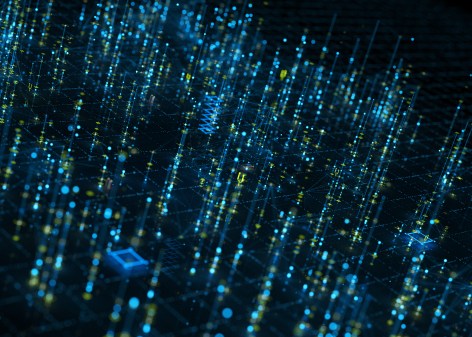NASA forays into the Internet of Things

Las Vegas — Many of the commercial products around the Internet of Things may just seem like toys, but officials at NASA’s Jet Propulsion Laboratory are beginning to use them to connect with citizens in new ways, improve lab operations and even monitor the lab’s information security operations.
“IoT is much more than the devices and the toys that you’ll see,” Tom Soderstrom, JPL’s IT chief technology and innovation officer, said Wednesday at Amazon Web Service’s re: Invent conference.
An example he and a colleague provided: connecting a virtual piano to their firewall data and assigning different kinds of activity a different piano key. It can be running while someone is doing other work, but if they hear unusual sounds or a drastic pickup in sounds it might be an indicator that someone on their cybersecurity team should take action.
“One of our biggest problems is cybersecurity,” Soderstrom said. “And having all of this data flow at you — it’s terabytes of data all the time. We have attempted attacks four million times a day. So how do you deal with it?”
The simple monitoring tool has already been useful at JPL, Soderstom said. He said he and JPL data scientist Mik Cox were doing a demo of the new use case one day, and were talking. All of the sudden, they noticed silence.
“The firewall had stopped playing. Switched to the dashboard and saw that we pegged red, so we picked up the phone and called our cybersecurity operation and said, ‘we’re getting a denial of service attack from Romania,’” Soderstrom said. “From that it happened to making that call was about five seconds, and they hadn’t even seen it yet.”
He added: “That’s the ability of being able to have all of these IoT devices.”
While Cox noted that the IoT can be a surprising boon to security operations, he acknowledged JPL has to weigh the risk of using connected commercial devices for its operations.
Right now the IoT is only available in the public cloud, Cox noted, not AWS’s Gov Cloud. So Cox said JPL made the decision to not attach devices to its normal network for its mission applications, but to create a separate devices only network.
“We want to be careful about what we’re actually passing through the public cloud,” Cox said.
The laboratory is also experimenting with using commercial connected devices to improve use of its conference rooms and capitalize on its limited space.
“We at JPL support a number of missions and these missions are extremely disparate in the ways that they operate,” Cox said. “A lot of times each mission thinks they need their own hardware, they think they need their own meeting spaces, all that kind of stuff, and historically we have supported that.”
But times are changing, he said.
“We’re getting to a point where we’re taking on more and more, and we need to be able to combine some of these spaces because this operations room sits empty 60 percent of the time and we need to be able to use the people space,” he said.
JPL is in the process of installing Raspberry Pis with motion sensors attached to see what conference rooms are actually being used. That data is being collected where it can be searched and used to get more value out of conference rooms, Cox said.
They have also prototyped using Alexa to help turn equipment on and off and use it to make it easier to set up for presentations.
“Is there really a difference between a connected conference room and a connected living room?” Soderstrom said. “Not really. It’s how you use it and what you try.”
The rapidity with which JPL is able to integrate new, cheap, commercially-available technologies is astounding, Soderstrom said.
“By being able to do these things quickly you get nontraditional partners, so IT is all the sudden a very strong partner with facilities. And before that we hated each other, because we wanted to go fast and they said ‘well I’d have to knock down walls,’” Soderstrom said. “With this all of the sudden you can actually look at the data.”
During a keynote session on Tuesday, Soderstrom also unveiled a NASA-developed Mars skill for Alexa, now available for download.
“This is all about exploring, and getting crowdsourcing and getting people to understand and care about Mars and ask new questions,” Soderstrom said.
It’s a fresh way to connect people to science.
“With this, the idea is we’re all going to be the future explorers,” he said to the crowd of techies.
Contact Samantha via email at samantha.ehlinger@fedscoop.com, or follow her on Twitter at @samehlinger. Subscribe to the Daily Scoop for stories like this in your inbox every morning by signing up here: fdscp.com/sign-me-on.






